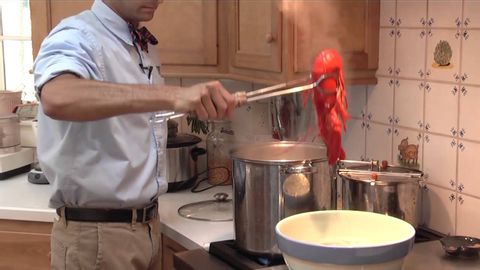
Subtitles & vocabulary
Lobster Cooking and Eating
00
rachel6433 posted on 2015/04/09Save
Video vocabulary
process
US /ˈprɑsˌɛs, ˈproˌsɛs/
・
UK /prə'ses/
- Transitive Verb
- To organize and use data in a computer
- To deal with official forms in the way required
- Noun (Countable/Uncountable)
- Dealing with official forms in the way required
- Set of changes that occur slowly and naturally
A2TOEIC
More hard
US /hɑː(r)d/
・
UK /hɑ:d/
- Adjective
- Difficult to do; difficult to understand
- (Of facts) not able to be misunderstood; clear
- Adverb
- With lots of force, power, or impact
A1TOEIC
More flavor
US /ˈflevɚ/
・
UK /'fleɪvə/
- Noun (Countable/Uncountable)
- Quality giving something a particular character
- Taste of something, especially in food or drink
- Transitive Verb
- To add extra taste to a food
B1
More water
US /ˈwɔtɚ, ˈwɑtɚ/
・
UK /'wɔ:tə(r)/
- Uncountable Noun
- Clear liquid that forms the seas, rivers and rain
- Large area such as an ocean or sea
- Intransitive Verb
- (Of the eyes) to produce tears
- (Mouth) to become wet at the thought of nice food
A1
More Use Energy
Unlock All Vocabulary
Unlock pronunciation, explanations, and filters
